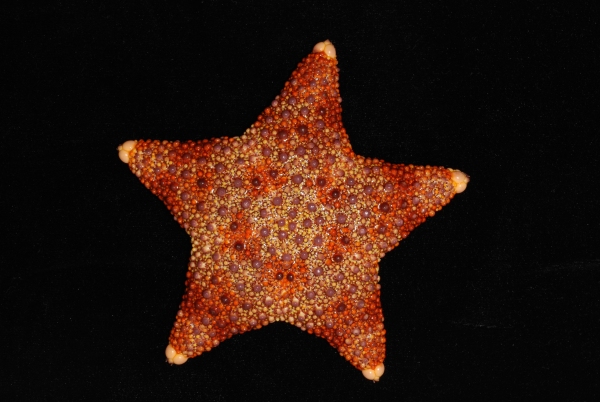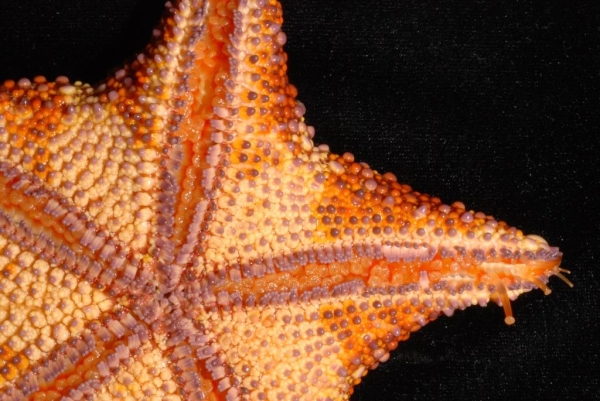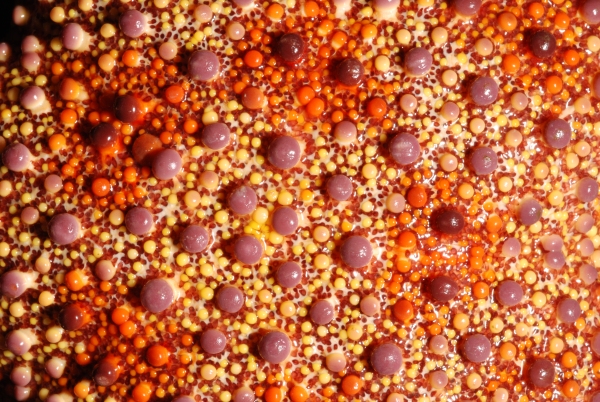This week’s critter is a funky, multi-coloured seastar, Asterodiscides truncatus, commonly known as the firebrick seastar.
This species is described as “variegated usually with pastel colours, mauve, orange, and yellow appearing to predominate; purple or red; chrome, vermillion and purple” (1).
There are two species of Asterodiscides found in New Zealand’s EEZ, Asterodiscides truncatus and Asterodiscides grayi. Asterodiscides grayi is recorded from Japan, northeastern Australia, Norfolk Island and Raoul Island in the Kermadecs. Asterodiscides truncatus has a slightly more southern distribution, known from southern and south eastern Australia, northern New Zealand and Raoul Island in the Kermadecs. The specimens we have in the collection are all from relatively shallow depths of 60-250 m. It will be interesting to see photos of fresh A. grayi specimens from the Kermadecs and see what colour they are in life too.
Asterodiscides truncatus, a beautiful specimen of firebrick seastar collected from the Bay of Islands in 2009. This animal was about 12 cm from its armtip across to the opposite interradius. Photo credit: Rob Stewart/ Ocean Survey 20/20 Bay of Islands Coastal Biodiversity, Sediment and Seabed Habitat Project.
This is the underside of Asterodiscides truncatus, here you can see some of the tube feet sticking out of the ambulacral groove. They use these water-powered tube feet to move around on the seafloor and to pass wayward food particles along to the mouth in the centre of the disc. Photo credit: Rob Stewart/ Ocean Survey 20/20 Bay of Islands Coastal Biodiversity, Sediment and Seabed Habitat Project.
A close up look at the multi-coloured tubercles on the upper surface of Asterodiscides truncatus. Photo credit: Rob Stewart/ Ocean Survey 20/20 Bay of Islands Coastal Biodiversity, Sediment and Seabed Habitat Project.
Asterodiscides truncatus on the seabed at 153 m deep in the Bay of Islands, New Zealand. Photo credit: Ocean Survey 20/20 Bay of Islands Coastal Biodiversity, Sediment and Seabed Habitat Project.
Reference:
1.Rowe, F.W.E. 1977. A new family of Asteroidea (Echinodermata), with the description of five new species and one subspecies of Asterodiscides. Records of the Australian Museum 31: 187-233.



